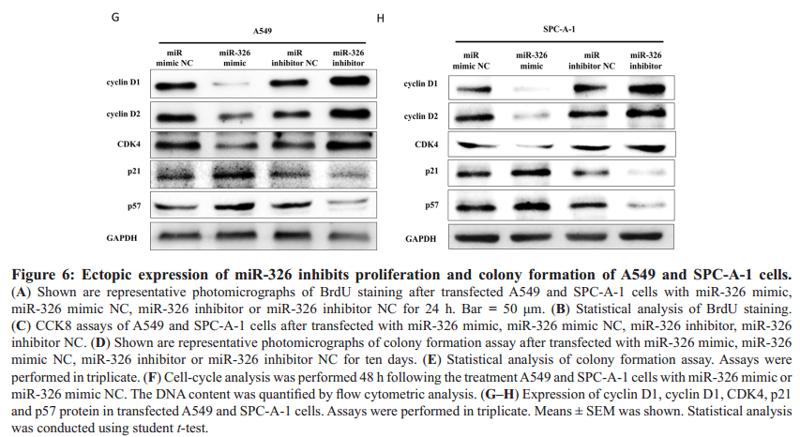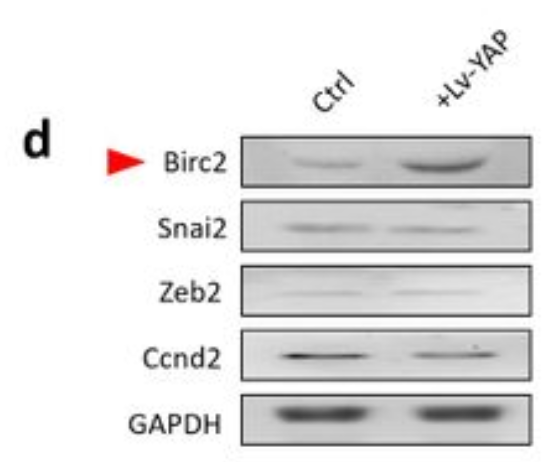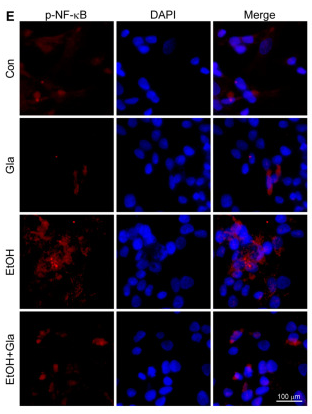Cyclin D2 Antibody - #AF5410
| Product: | Cyclin D2 Antibody |
| Catalog: | AF5410 |
| Description: | Rabbit polyclonal antibody to Cyclin D2 |
| Application: | WB IF/ICC |
| Cited expt.: | WB, IF/ICC |
| Reactivity: | Human, Mouse, Rat |
| Prediction: | Pig, Bovine, Horse, Sheep, Rabbit, Dog, Chicken, Xenopus |
| Mol.Wt.: | 33 kDa; 33kD(Calculated). |
| Uniprot: | P30279 |
| RRID: | AB_2837894 |
Related Downloads
Protocols
Product Info
*The optimal dilutions should be determined by the end user. For optimal experimental results, antibody reuse is not recommended.
*Tips:
WB: For western blot detection of denatured protein samples. IHC: For immunohistochemical detection of paraffin sections (IHC-p) or frozen sections (IHC-f) of tissue samples. IF/ICC: For immunofluorescence detection of cell samples. ELISA(peptide): For ELISA detection of antigenic peptide.
Cite Format: Affinity Biosciences Cat# AF5410, RRID:AB_2837894.
Fold/Unfold
CCND 2; ccnd2; CCND2_HUMAN; CyclinD2; G1/S specific cyclin D2; G1/S-specific cyclin-D2; KIAK0002; MGC102758; MPPH3;
Immunogens
A synthesized peptide derived from human Cyclin D2, corresponding to a region within C-terminal amino acids.
- P30279 CCND2_HUMAN:
- Protein BLAST With
- NCBI/
- ExPASy/
- Uniprot
MELLCHEVDPVRRAVRDRNLLRDDRVLQNLLTIEERYLPQCSYFKCVQKDIQPYMRRMVATWMLEVCEEQKCEEEVFPLAMNYLDRFLAGVPTPKSHLQLLGAVCMFLASKLKETSPLTAEKLCIYTDNSIKPQELLEWELVVLGKLKWNLAAVTPHDFIEHILRKLPQQREKLSLIRKHAQTFIALCATDFKFAMYPPSMIATGSVGAAICGLQQDEEVSSLTCDALTELLAKITNTDVDCLKACQEQIEAVLLNSLQQYRQDQRDGSKSEDELDQASTPTDVRDIDL
Predictions
Score>80(red) has high confidence and is suggested to be used for WB detection. *The prediction model is mainly based on the alignment of immunogen sequences, the results are for reference only, not as the basis of quality assurance.
High(score>80) Medium(80>score>50) Low(score<50) No confidence
Research Backgrounds
Regulatory component of the cyclin D2-CDK4 (DC) complex that phosphorylates and inhibits members of the retinoblastoma (RB) protein family including RB1 and regulates the cell-cycle during G(1)/S transition. Phosphorylation of RB1 allows dissociation of the transcription factor E2F from the RB/E2F complex and the subsequent transcription of E2F target genes which are responsible for the progression through the G(1) phase. Hypophosphorylates RB1 in early G(1) phase. Cyclin D-CDK4 complexes are major integrators of various mitogenenic and antimitogenic signals. Also substrate for SMAD3, phosphorylating SMAD3 in a cell-cycle-dependent manner and repressing its transcriptional activity. Component of the ternary complex, cyclin D2/CDK4/CDKN1B, required for nuclear translocation and activity of the cyclin D-CDK4 complex (By similarity).
Polyubiquitinated by the SCF(FBXL2) complex, leading to proteasomal degradation.
Nucleus. Cytoplasm. Membrane.
Note: Cyclin D-CDK4 complexes accumulate at the nuclear membrane and are then translocated into the nucleus through interaction with KIP/CIP family members.
Cytoplasm.
Belongs to the cyclin family. Cyclin D subfamily.
Research Fields
· Cellular Processes > Cell growth and death > Cell cycle. (View pathway)
· Cellular Processes > Cell growth and death > p53 signaling pathway. (View pathway)
· Cellular Processes > Cell growth and death > Cellular senescence. (View pathway)
· Cellular Processes > Cellular community - eukaryotes > Focal adhesion. (View pathway)
· Environmental Information Processing > Signal transduction > FoxO signaling pathway. (View pathway)
· Environmental Information Processing > Signal transduction > PI3K-Akt signaling pathway. (View pathway)
· Environmental Information Processing > Signal transduction > Wnt signaling pathway. (View pathway)
· Environmental Information Processing > Signal transduction > Hedgehog signaling pathway. (View pathway)
· Environmental Information Processing > Signal transduction > Hippo signaling pathway. (View pathway)
· Environmental Information Processing > Signal transduction > Jak-STAT signaling pathway. (View pathway)
· Human Diseases > Infectious diseases: Viral > Measles.
· Human Diseases > Infectious diseases: Viral > Human papillomavirus infection.
· Human Diseases > Infectious diseases: Viral > HTLV-I infection.
· Human Diseases > Cancers: Overview > Pathways in cancer. (View pathway)
· Human Diseases > Cancers: Overview > Transcriptional misregulation in cancer.
· Human Diseases > Cancers: Overview > Viral carcinogenesis.
· Human Diseases > Cancers: Overview > MicroRNAs in cancer.
· Organismal Systems > Endocrine system > Prolactin signaling pathway. (View pathway)
References
Application: WB Species: Mouse Sample: skin tissues
Application: IF/ICC Species: Mouse Sample: skin tissues
Application: WB Species: Mouse Sample:
Application: WB Species: human Sample: A549 cells
Application: WB Species: Sample:
Application: WB Species: Human Sample: CSPCs
Restrictive clause
Affinity Biosciences tests all products strictly. Citations are provided as a resource for additional applications that have not been validated by Affinity Biosciences. Please choose the appropriate format for each application and consult Materials and Methods sections for additional details about the use of any product in these publications.
For Research Use Only.
Not for use in diagnostic or therapeutic procedures. Not for resale. Not for distribution without written consent. Affinity Biosciences will not be held responsible for patent infringement or other violations that may occur with the use of our products. Affinity Biosciences, Affinity Biosciences Logo and all other trademarks are the property of Affinity Biosciences LTD.





